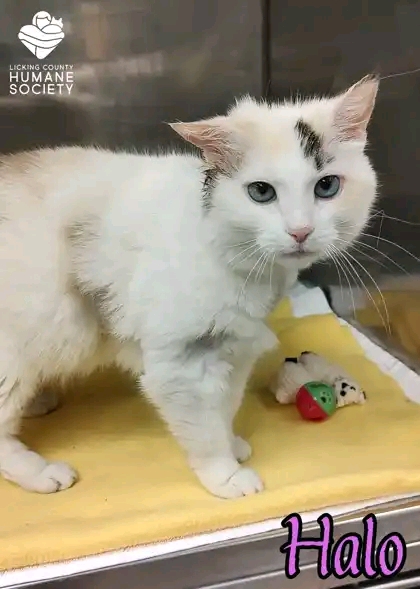Petting aggression in cats can be treated by the use of diffusers such as the Feliway Classic Diffuser.
These diffusers are capable of calming the aggression in cats. If that’s not available, then trimming your cat’s nails is another efficient way of treating aggression in cats.
Is that only what is needed to know about petting aggression in cats? Of course not!
Read this article to find out a detailed explanation of what causes petting aggression and other prevention tips.
Causes Of Petting Aggression In Cats
When your cat bites or behaves aggressively towards you when you stroke its back, it may not be ordinary; there could be underlying issues. In this section, you will be reading about the common causes of petting aggression in cats. Let’s get right into it;
Pain
Pain in a part of your cat’s body may cause it to react negatively when being petted. Sometimes, cats may have a joint, bone, or some other kind of pain and you may not know about it.
So, when you stroke or pay your cat a little, the pain may cause your cat to bite you. For reserved cats, they may just run away from you to an isolated place to avoid being petted.
When this happens, that means that there’s an underlying pain that may need your attention as the pet owner.
READ MORE: How To Take Care Of A GoldFish In A Bowl
Overfitting
Overpetting is another common cause of petting aggression in cats. Aggression from your cat may result from you (the owner) overgrooming and over-petting it.
Some cats do not like being groomed for a long time, so when they are satisfied with your effort, they may scratch and react aggressively to the owner to signal that they are satisfied with it.
For other kinds of cats, over-petting is a no. They don’t like to be petted at all, so when you try to do that, they become violent.
Finding out the causes of petting aggression is key to knowing what treatment approach is best for a cat suffering from petting aggression.
We’ve seen the causes, now let’s go over to the treatment methods. The next section dissects that.
How To Treat Petting Aggression In Cats
Petting aggression can be treated in two basic ways. The first way is by using the Feliway Classic Diffuser, and the second approach is to trim the cat’s claws. In the following paragraphs, you will be reading a detailed explanation of how this works.
1. Using the Feliway Classic Diffuser
The Feliway Classic Diffuser is equipment that has been recognized to calm a cat’s aggressiveness.
Whether it is the Feliway spray or Feliway Classic Diffuser, you could reduce the rate of aggressive behaviour in your cat. When it is sprayed in your home, it is capable of comforting cats and helps to avoid habits such as scratching, hiding, and urinating.
2. Trim Your Cat Claws
Since we’ve read earlier that one reaction by cats to petting is scratching, the best treatment for that in response would be to trim your cat’s claws. In trimming your cat’s claws, if you’re not good at it, you want to request the help of an experienced person.
By trimming your cat claws, you reduce the impact of the sharp claws from hurting your skin. When trimming, be sure not to declaw your cat because it may be illegal where you live.
If you’re not comfortable trimming your cat’s claws, you can go for a claw cap for your cat. The claw cap prevents your cat from pulling the claws and using them to hurt you. That’s another alternative you can try.
So far, we’ve discussed treating petting aggression in cats and its causes of it. However, what then, should be done to reduce the risk of aggression from cats as a result of petting? Let’s find out in the next section.
How To Prevent Petting Aggression In Cats
If there’s no Feliway Classic Diffuser or claws cap, there are other proven ways to avoid aggression from your cat. Let’s check out some ways to reduce petting aggression in your cat.
1. Seek Consent Before Petting
Before you start full-blown petting of your cat you need to seek the consent of the cat before petting. You can do this by touching the cat at intervals to see how it reacts.
If it starts to scratch you back or bite you, then it means that it is not ready so back off. On the other hand, if it gives body language that you should do that more, then it’s a good sign for you to go all in.
If you pet your cat without its consent, you might end up getting bitten. So, consent is really important if you don’t want to experience petting aggression.
2. Adopt Positive Reinforcement Training
Positive reinforcement training is a type of training whereby you reward your pet when they do what you want. In the case of reducing pet aggression, you could serve your cat its favourite treat when it allows you to pet it.
When this is done regularly, your cat will gradually get comfortable with you petting it and, with time, will stop being aggressive when being petted.
FAQ
How do you fix petting aggression in cats?
Petting Aggression can be fixed using diffusers such as the Feliway Classic Diffuser. This is used to calm the aggressive atmosphere and restore calmness. It can also be fixed by trimming your cat’s nails.
Does petting aggression hurt?
Petting aggression in cats may include biting and scratching from the cat to the human. This may hurt your skin and may even take some time to heal.
Is petting aggression good?
Petting aggression is in no way good. It can result in injuries and bruises.
Conclusion
Getting bitten by your cat when petting it is one of the most heartbreaking things a pet owner may face. Petting aggression in cats is one form of aggression that is prone to cats.
However, the good news is that, with the right help you can succeed in getting rid of this. This article has been able to show you all you need to know about petting aggression and ways to stop it. It’s left to you to use this information how you want to.





One thought on “How To Treat Petting Aggression In Cats”